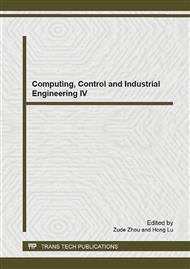p.411
p.417
p.422
p.428
p.432
p.439
p.445
p.451
p.456
Study on PID Parameters Tuning Based on Particle Swarm Optimization
Abstract:
To address the PID parameter tuning problem, inspired by the swarm intelligence optimization algorithm, a tuning method of PID parameters based on particle swarm algorithm is proposed. To find an optimal set of PID control parameters in the target space, three parameters of the PID are as particles based on the fitness function. By designing optimization programs, air-conditioning temperature control system experiments were carried out as an example. The results show that the optimization can improve the dynamic control performance of the system.
Info:
Periodical:
Pages:
432-438
Citation:
Online since:
October 2013
Authors:
Price:
Сopyright:
© 2013 Trans Tech Publications Ltd. All Rights Reserved
Share:
Citation:


